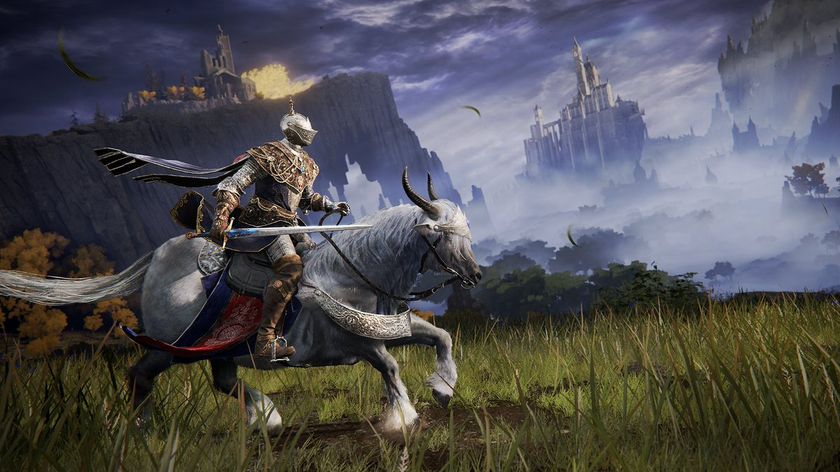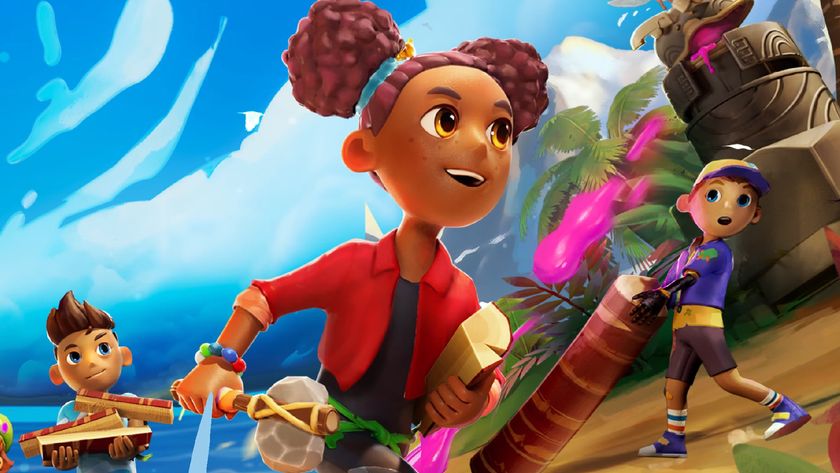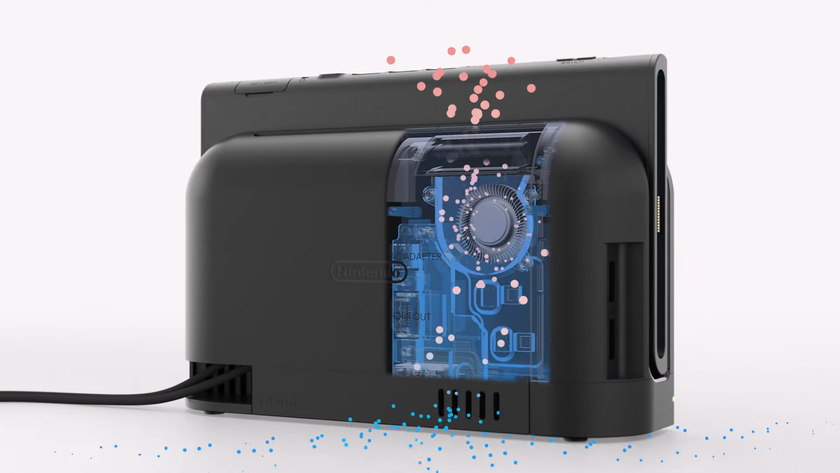Hearthstone: Heroes of Warcraft - 9 things you need to know
News, release date, and everything else we know
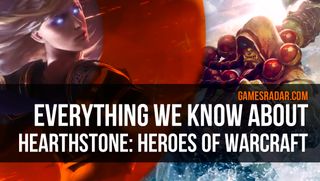
A flurry, not a snowstorm
Updated on 3/24/13 with hands-on details.
Industry behemoth Blizzard is trying a different approach with its just-announced free-to-play, online collectible card game, Hearthstone: Heroes of Warcraft. The long-standing Irvine, CA-based developer is foregoing its usual magnum opus aims, this time opting for a leaner, more accessible game thats immediately engaging. And it's hoping to do it without sacrificing the depth and devotion it built its reputation on.
Instead, the company is taking a cue from its tabletop collectible card game, World of Warcraft: Trading Card Game. Will Blizzard succeed? Its too early to tell--but heres eight things you need to know about Hearthstone.
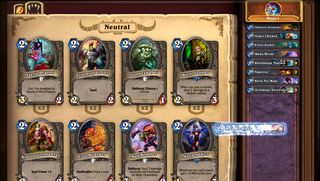
It aint your daddys CCG
While you the view the game from above like you would a real-life card game, Hearthstone takes full advantage of the fact its a video game. Its brought to life with flourishes such as voice acting, 3D environments modeled on the edges of the play-space (you can even click on them to see brief animations), and audio-visual effects for each card.
Whenever a card is drawn or played, it flies into the center of the screen to announce its arrival. You can use a drag-and-drop reticule to pinpoint your target. Players can use voice-acted emotes at any time, complete with Blizzards trademark wit--an appropriate way to voice your aggression without breaking the games immersion. You see the back of your opponents hand from across the table, and youll know when theyre about to play a card, and even which of your cards theyre targeting--you just wont know whats actually going to happen until its played. It allows you to see their thought process and adds suspense.
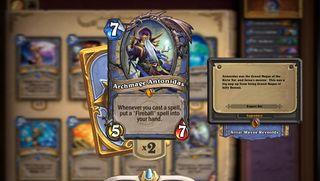
It feels like a Warcraft game
From the soundtrack to the quirky visuals to the classes you can pick to the nine archetypes you can choose to represent yourself, this game reeks of the Warcraft franchise. The game borrows its nine classes from World or Warcraft. Each class has its own ability--such as dealing damage or spawning creatures--that shape its style. They also boast their own specific card types, unique to each class, which players can utilize in their deck. Fans of the series will recognize faces and names that are used throughout the cards, and find plenty of in-jokes. The game includes weapons cards that can be equipped by your hero, pulled from the Warcraft lore.
The franchises trademark art style is retained as well, from the board to the interface. The look and feel of it helps solidify that this is a legitimate entry into the franchise--not a free-to-play cash grab. Even the card rarity levels--commons, rares, epics, and legendaries--are pulled directly from the series lineage.
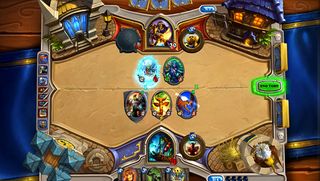
On the inside, its a crisp, clean and simplified CCG
Fans of Magic: The Gathering and other CCGs will feel right at home here. The mechanics are much the same as other genre entries--attacking, casting spells, summoning, mana pools (which simply increase by 1 each turn, barring any special spells), drawing cards, attacking the other player directly to win the game, and so on. But Blizzard aims to simplify and refine the CCG, much as they did with the MMORPG.
The interface is clean, decks are limited to 30 cards, and the mechanics of each card are simple enough to understand immediately. When both players run out of cards, they take damage each turn until the game is over. Getting into multiplayer games, which are limited to 1-on-1 is as simple as hitting go. Theres also a single-player practice mode, and a mode similar to the ever-popular draft CCG format, where you build a deck immediately before the game from a pre-set pool of cards and go against someone else who has just done the same.
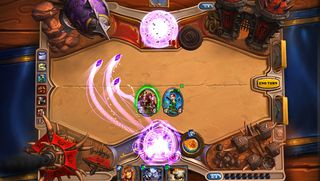
It leverages the fact that its digital
Digital cards can do things that physical ones would have a hard time with, and Blizzard is not afraid to take advantage of it. There are cards that spawn other cards out of them when they die. And not just tokens, either--theyre full-blown cards, complete with voiced quips. There are cards that will, for lack of a better term, kill you. That means they attack your on-screen avatar and then replace it.
In the example shown at PAX East, this meant that a demon killed his owner, but it worked out well for the player: He switched out his avatars dwindling HP for the demons fully-stocked health. Having a card turn on you seems to be a random event, so it could prove to be a boon, a game-loser, or just an annoyance. Luckily--or unluckily--it appears that only powerful cards are capable of autonomy. Another example: Normally, players get around 90 seconds per turn, but some cards will allow them to cut down the amount of time their opponents have.
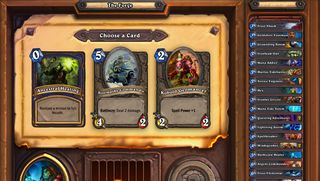
There are multiple deck building options
In Hearthstone, players will have a few different methods for creating a deck. If youre the kind of person who is primarily concerned with the main crux of their deck--the cards that will win you the game--you can simply pick those and ask the AI to show some cards that would complement them well. Youll then be presented with options from which to choose additions.
You can also just pick out a few cards and ask the AI to flesh out the rest of your deck for you, with no need to choose anything or debate any minutiae. Or, you can take the old school approach and handpick everything. From the casual to the hardcore, Hearthstone appears to have a deck building approach for all types of player.
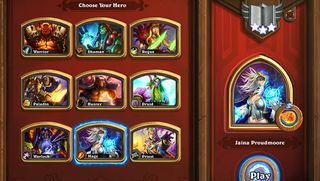
It emulates the card-buying experience
As with most CCGs, a big part of the Hearthstone experience is buying booster packs of cards. Here, each booster pack contains 5 cards. Blizzard expects each booster pack to be sold at the dangerously-low-just-buy-one-more price of $1. But you can also collect cards by simply winning games. With 300 cards expected at launch, there will be no shortage of options to explore and things to collect.
Even opening the booster packs retains that foil-tearing drama that CCG-junkies carve: You click to open the booster, and then each card is revealed face down. The more rare cards will glow, tipping you off to their value. You click each card individually to reveal them, and theyre heralded in with plenty of fanfare. Its a dramatic process, really, but its easy to see how it could hold its own against one of the most addicting parts of CCGs.
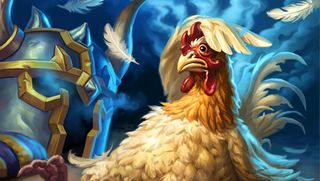
You can turn your common, weaker cards into better ones
Got too many duplicates that you dont need? No problem. You can reduce these cards into a currency called dust in a process Blizzard calls "disenchanting." This removes them from your collection, but also enables you to spend that dust on rarer, more powerful cards. For those of us who can get a little over obsessive over finding every card--and those of us with really bad luck--this is a godsend. There are even special versions of some more powerful cards that are functionally the same, but boast extra visual and audio flair, like the digital version of a foil or holographic physical card.
Its also one of the more innovative features Blizzard has dreamed up, and a modern-day equivalent to the infamous sell all your crappy cards at the hobby store so you can buy a good one tactic. Its also dressed up with the same bombastic sounds and visuals found throughout the rest of the game, so even these mundane, administrative-type tasks feel fun and epic.
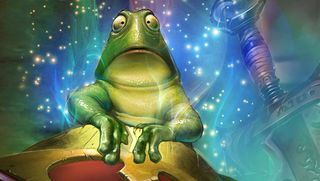
Blizzard is trying out a different approach
Whereas Blizzards goliath World of Warcraft has a development team of about 135 people, Hearthstones creators number only about 15. Its an old-school approach for Blizzard, and theyre employing more generalists on the team, not specialists. The game has been on a much faster development schedule, and the team is making sure to experiment as much as possible. The whole thing is a result of the companys longstanding love of CCGs.
While its a little bit like a space shuttle manufacturer making a skateboard, you have to admit: Seeing what an AAA developer can do in the casual space--without alienating their core fans--is exciting. One thing Blizzard didnt change, though, is that this game is coming out for PC and Mac, like always. But they still found room to shake things up, with an iPad version expected shortly after the initial game launch.

Its coming soon... or so they say
As a developer infamous for massive, multi-year delays, Blizzard decided to challenge themselves with this one: Can they announce a game and release it in a year? Their aggressive timetable says that well see a beta this summer, with the official release coming soon after.
What's more, a version of the game is already on the PAX East show floor. Check back later this weekend for our hands-on impressions.
